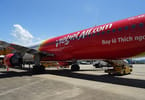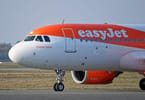ISLAMABAD, Pakistan (eTN) – US President Barack Obama along with Afghan President Hamid Karzai announced US withdrawal strategy. Afghan neighbors are seriously concerned about possible increase in terrorism and drugs smuggling in the region in post-withdrawal scenario.
At the moment Afghanistan is the biggest opium producer in the world producing 5,800 tons a year. It increased by 61% last year alone. The United Nations warned that the situation was out of control. One can imagine how much it can get out of hands when there will be only Afghan Army and Police to control – both forces are allegedly involved in this trade themselves.
Afghan economy is 70% dependent on foreign aids and grants and Afghan National Army and Afghan National Police are 90% dependent on grants for their salaries and it is understood that Afghan government surely will not sustain such huge forces when salaries will go out of its own pocket, resulting gradual shrinking of the forces. The United States and its allies have generally agreed to spend about $4.1 billion a year on Afghan army and police forces after combat operations ended in late 2014.
The money would pay for a force of about 230,000 Afghan army and police officers, significantly fewer than in a long-standing plan to increase the forces to about 350,000 by last quarter of year 2012.
According to financial plan, US and non-ISAF countries, such as Japan, Pakistan, India, Gulf states, would cover more than half the funding, providing $2.3 billion per year. NATO and ISAF countries (excluding the US) would give $1.3 billion. And $500 million will come from the Afghan government. The specific country-wide breakdown of the figures is not disclosed, but the UK government has already confirmed its share amounts to 70 million pounds – or US$110 million. The number of Afghanistan National Security Forces (ANSF) is expected to reach 352,000 by the end of 2012 and remain at that level until 2015 – nearly two years. The reduction of the forces will begin in 2015 and end in 2017 at around 230,000.
German Chancellor Merkel has said international forces in Afghanistan are on course for a planned withdrawal by the end of 2013. At a NATO leadership meeting held on May 4, reports are saying that the NATO allies have agreed to be out by the end of 2013. France’s new president, Francois Hollande, has been saying he wants France out by the end of 2012. That indicates security burden on USA and Afghan forces will increase well before receiving the grants for holding Afghan army intact.
US Post-withdrawal strategy seems to be depending upon two strategic developments – rapprochement with Taliban mindset if not leadership and diverting world trade to its New Silk Road that can boost Afghan economy. Sources in Taliban cadre claim they are ready for talks provided that world accepts their core points including that holy Koran shall be the constitution of Afghanistan and no foreign troops shall stay in Afghanistan. These two points of course are not acceptable for Karazai government and the western world because accepting these points is stamping caliph rule in Afghanistan as it was during Taliban era.
Therefore one can say that nothing has changed and things are as same as they were in year 2001 except the disaster that was faced by Pakistani and Afghan societies. Meanwhile US sponsored New Silk Road idea looks ambitious but not too practical when China has already shown its New Silk Road works while US Silk Road ideas has serious impediments and it may take several years to implement it. US sponsored Afghan-Uzbek rail track that was constructed in recent past to link Afghanistan with Uzbekistan trade has been closed down just after functioning for a few months. The biggest impediment for this New Silk road is Afghanistan situation itself and second is that this idea of New
Silk Road of United States does not include Iran as link and from Turkmenistan Road will go to Azerbaijan by avoiding Iran.
This route is not cost effective and again it will go through a conflict zone due to sore relations between Azerbaijan and Armenia before connecting to Turkey or diverting to Georgia and then Ukraine.But Kiev is also not as friendly, as it was when this idea was unveiled, because that time US friendly Yulia Tymoshenko was ruling the country, but now Russia- supported government is onboard. Prime Minister Azarov and President Viktor Yanukovych are in favor of Russian philosophy of Former Soviet Union Integration instead of US friendly policies.
On the other hand, China’s New Silk Road has proven its utility. It runs from Lianyungang port in Eastern China through Kazakhstan in Central Asia and onto Rotterdam Germany. A demonstration container train was run on China Silk road train link carrying a load of Chinese goods, and covered 10,000 kilometers (6,200 miles) in 15 days, crossing China, Mongolia, Russia, Belarus, and Poland before arriving in Hamburg, Germany. By comparison, sea transport adds 10,000 kilometers to the journey through the Indian Ocean, and would have taken 40 days to ship goods from China to Germany – more than double the time to send trains through the Eurasian corridor.
There is a major difference between the US-sponsored New Silk Road and the China project. China has totally left out Afghanistan from its project, thinking that this land will remain unstable, while the US project stands on the foundation of promoting Afghanistan and linking developments in South Asia and Central Asia through Afghanistan but China plans minus Afghanistan. In this situation there is no chance for Afghanistan to get its share from South Asia to Central Asia trade and transport and build up its economy and make it ready to face post 2014 challenges.
Afghan neighbors fear that Afghanistan after 2014 will be a more dangerous country and possibly producing more drugs and terrorism, therefore these countries wish to keep themselves away from US-Afghan policies. Readiness of Central Asian countries could be estimated by the fact that Collective Security Treaty Organization (CSTO) during its December 2011 meeting decided that any country outside CSTO will only be able to establish bases on the territory of a member state with the consent of all members. The CSTO is a regional security organization whose seven member states are Russia, Armenia, Belarus, Kazakhstan, Kyrgyzstan, Tajikistan and Uzbekistan.
Tajikistan has an edge that its borders are looked after by Russian 502 Battalion while Uzbek forces successfully washed away Islamists from Fergana valley that was in the virtual control of Islamist militants who announced caliph rule and ruled the valley for 3 years. Therefore, there are no linkages and no soft corners among Uzbek forces for Taliban or Islamists or for Afghans. Meanwhile there is strong presence of NATO in Turkmenistan so it is relatively safe.
Iran is also ready to face the situation and onslaught. Ground forces of Iran’s elite Islamic Revolution Guards Corps (IRGC) held military exercises near the border with Afghanistan in January to test their readiness to combat the situation. Scenario indicates that all Afghan neighbors except Pakistan are ready, one way or another, to face post-withdrawal situation.
Only Pakistan seems to be weaker in this whole scenario. The recent event of Bannu jail break indicates poor readiness of Pakistan to face the situation, where there was no hindrance for Talibans to brake the jail and released around 600 prisoners including 130 top Taliban operators.
Therefore looking beyond 2014, Pakistan situation looks rather grim because it will be only country that will receive more Afghanis, who will run if there is a civil war in Afghanistan or if Taliban rules is clamped because situation indicates that Afghanistan situation may become worse after departure of foreign forces and the only easy exit will be only to Pakistan.
Moreover Talibans always get support from religious parties from Pakistan while establishment has a soft spot for Muslims brothers from Afghan soil.
Is Pakistan ready to face the situation, owing its domestic political infighting and pro-Taliban elements among its hatchery? This is a major question in the mind of every Pakistani today.
WHAT TO TAKE AWAY FROM THIS ARTICLE:
- Afghan economy is 70% dependent on foreign aids and grants and Afghan National Army and Afghan National Police are 90% dependent on grants for their salaries and it is understood that Afghan government surely will not sustain such huge forces when salaries will go out of its own pocket, resulting gradual shrinking of the forces.
- The money would pay for a force of about 230,000 Afghan army and police officers, significantly fewer than in a long-standing plan to increase the forces to about 350,000 by last quarter of year 2012.
- This route is not cost effective and again it will go through a conflict zone due to sore relations between Azerbaijan and Armenia before connecting to Turkey or diverting to Georgia and then Ukraine.





















